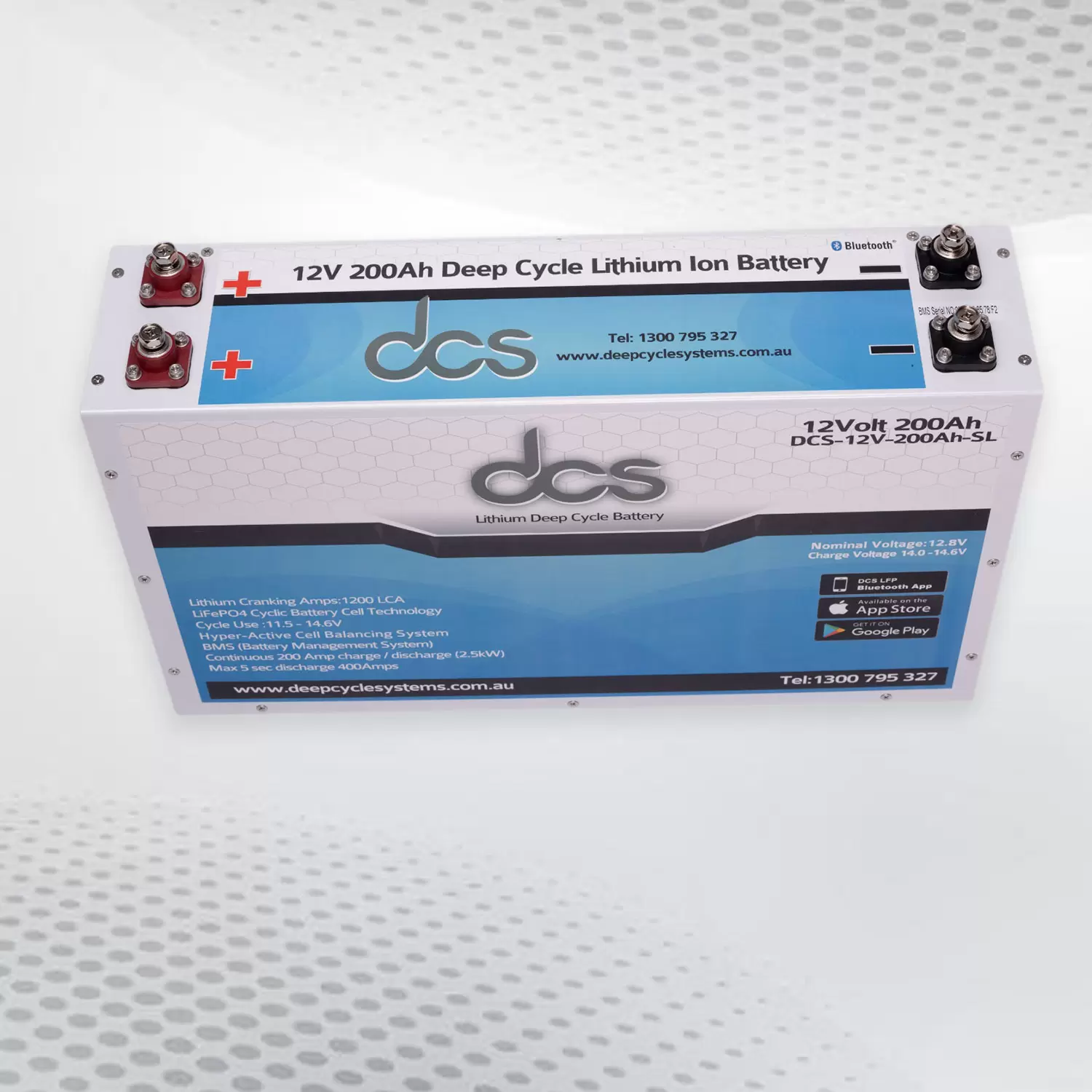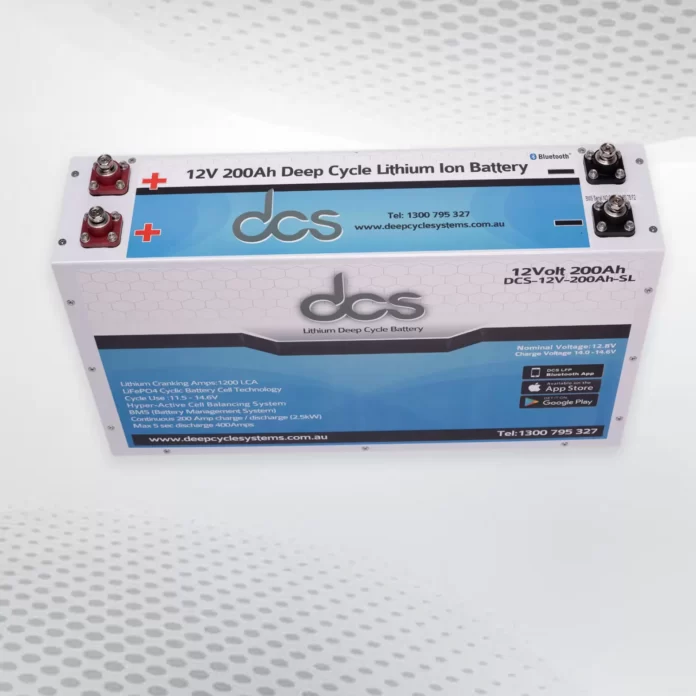Are you tired of constantly replacing your vehicle’s cranking battery? Do you want a more reliable and long-lasting option? Look no further than the lithium cranking battery. With its advanced technology and impressive performance, this type of battery is becoming increasingly popular in the automotive world. In this blog post, we’ll explore the benefits and tips for using a lithium-ion cranking battery so you can unlock its full potential and never worry about a dead battery again.
Understanding the Basics of Lithium-Ion Cranking Batteries
Lithium-ion cranking batteries, fondly called the “starters,” hold a unique role in automotive and marine applications. They are the spark that brings your engine to life, providing that initial burst of power needed to kick-start the engine. Now, these aren’t your grandpa’s conventional lead-acid batteries, oh no! Lithium-ion cranking batteries are like the sleek, modern, high-tech cousin. They have a lot going for them; they are lightweight and incredibly efficient.
What’s more? They have an extended lifespan, giving you more bang for your buck. If you think about it, these advantages are key in a world where every ounce of fuel efficiency and every second of maintenance time matters. Plus, if you’re an environmentally conscious, you’ll be happy to know that these batteries have a smaller carbon footprint than their lead-acid counterparts. But let’s not get too technical here.
 Picture this – you’re heading out on a road trip. You’re about to turn the key or press the start button in your vehicle, and VROOM! It comes to life. That, my friend, is the magic of lithium-ion cranking batteries. It’s not just about powering your vehicle. It’s about reliability, longevity, and peace of mind, knowing that your battery won’t give out on you when you need it the most. They’re more than just a component; they’re the heart that starts the lifeblood of your engine’s journey.
Picture this – you’re heading out on a road trip. You’re about to turn the key or press the start button in your vehicle, and VROOM! It comes to life. That, my friend, is the magic of lithium-ion cranking batteries. It’s not just about powering your vehicle. It’s about reliability, longevity, and peace of mind, knowing that your battery won’t give out on you when you need it the most. They’re more than just a component; they’re the heart that starts the lifeblood of your engine’s journey.
Proper Handling and Storage of Lithium-Ion Cranking Batteries
Want to make sure your lithium-ion cranking battery serves you for the long haul? It’s all about the care and keeping. You see, these modern-day marvels thrive in cool, dry environments. So, always store them in a spot that fits the bill, and steer clear of extreme heat or cold. Think about it like this: if you wouldn’t want to be left there, neither does your battery. And whatever you do, avoid a short-circuit scenario – it’s a fast track to battery damage.
Keep your battery from sitting idle for too long, especially when fully discharged. A good rule of thumb is to store it with some juice left, around half-charged. Set a reminder to recharge it every few months, even when not in use. This will help keep it in peak condition and ready to crank your engine into action whenever you need it.
And let’s remember the terminals. Keep them clean and shiny like a new penny. Corrosion is the enemy here. Regular check-ups will help nip any potential issues in the bud. Taking these precautions will ensure that your lithium-ion cranking battery survives and delivers the reliable performance you need when you turn that key or press that start button. After all, a well-maintained battery is the secret to a hassle-free ride.
Maximizing Battery Life through Regular Maintenance
Taking care of your lithium-ion cranking battery isn’t rocket science; it’s about forming and sticking to a few good habits. This is where routine maintenance comes into play. These batteries are like pampered pets, and they need your attention to be at their best.
- Keep an eagle eye on those battery terminals. You must ensure they’re corrosion-free, so clean them up well so you spot any sign of rust properly. Rust and batteries? They’re like oil and water, friends. They don’t mix.
- Make sure your battery is sitting pretty. It should be securely mounted to ward off any damage from the pesky vibrations that can happen while cruising the highway.
- Do you remember how we talked about avoiding short-circuit scenarios? This extends to deeply discharging the battery, too. It’s best to keep your battery juiced up and not let it drain completely. A bit of TLC can go a long way in extending your battery’s lifespan?
- One more thing, and it’s a biggie. Regular voltage checks are a must. Think of it as taking your battery’s temperature. It’s a simple way to catch potential issues before they become big problems.
Recycling and Safe Disposal of lithium starter battery
Now, let’s talk about the farewell. When the time comes for your lithium starter battery to ride into the sunset, it’s critical to bid it goodbye responsibly. Lithium-ion batteries are packed with valuable materials that can be recovered and reused, making them an excellent candidate for recycling. Also, improper disposal can lead to potential safety hazards, which no one wants.
So, how do you dispose of these high-tech marvels properly? Remember that lithium-ion batteries should never be tossed in your regular trash or recycling bin. Instead, seek out local recycling facilities or programs that accept these types of batteries. Many automotive retailers and service centers also offer take-back programs where they handle the safe disposal or recycling of your old battery.
Handling a dead or dying lithium-ion cranking battery can be a mission, but its all part of the responsibility of being a battery user. So, let’s step up to the plate and do the right thing. Remember, a safe battery is a happy battery. And a happy battery means a happy vehicle and, more importantly, a happy you! Keep our planet green and safe by responsibly recycling your lithium-ion cranking batteries when their journey ends. After all, every end is a new beginning in the world of recycling.
Staying Informed About Latest Advancements
The world of lithium-ion technology is as dynamic and exciting as a high-speed car race. New developments zoom around the track at break-neck speed; being a spectator isn’t enough. You’ve got to be in the driver’s seat, with your finger firmly on the pulse of the latest advancements. My friends, this is about more than just keeping up with the Joneses. It’s about empowering yourself to make well-informed decisions about buying and maintaining your lithium-ion cranking battery. So, how do you fuel your knowledge engine?
It’s easier than you might think. Keep an eye on the industry news – the latest research, breakthroughs, and cutting-edge technologies. Participate in vibrant online communities where fellow auto enthusiasts and experts share insights and discuss trends. You could also consider attending expos and trade shows that spotlight lithium-ion technology. Remember, knowledge is power. And in this case, it’s the power that keeps your engine roaring and your vehicle moving forward. So, take the wheel, stay informed, and navigate to a better battery experience.
Testing Your Lithium-Ion Cranking Battery’s Health
Just like your own heartbeat, the health of your lithium-ion cranking battery is vital. Checking it regularly can help prevent mid-journey meltdowns and keep your road adventures smooth and uninterrupted. A simple way to check the health of your battery is by taking a voltage reading. Picture it as taking the pulse of your battery. A fully charged lithium-ion battery should ideally show a reading between 12.4 and 12.8V. If the reading drops below this range, it might be waving a red flag at you.
But wait, there’s more! Many of these modern marvels come equipped with built-in health indicators. These clever little extras provide a snapshot of your battery’s well-being, making detecting any signs of weakness easier. If your battery shows signs of fatigue, it might sign that it’s time to call it a day and usher in a fresh replacement.
Keep in mind that prevention is better than cure. By regularly testing the health of your lithium-ion cranking battery, you’re ensuring it’s always fit, healthy, and ready to leap into action whenever you’re ready to hit the road. Remember, a healthy battery means a happy journey. So, roll up your sleeves and make battery health checks part of your routine. After all, it’s the heart of your vehicle we’re talking about here, and it deserves your full attention.
Charging and Discharging Lithium-Ion Cranking Batteries
Charging your lithium-ion cranking battery is like hosting a dinner party. You want to get it right – not too little or too much. But how do you hit that sweet spot? It’s simpler than you might think. Always reach for a charger specifically designed for lithium-ion batteries. It’s like choosing the perfect wine to complement your meal. Avoid the temptation of a full charge or a complete discharge. It’s like overstuffing your guests or leaving them hungry. Both scenarios could be better.
Keep your battery’s charge level in the comfy zone of 20% to 80%. Think of it like keeping the conversation lively without letting it veer into controversial territory. By following these simple steps, you’re setting the stage for a successful soiree and ensuring your battery lives a long, robust life. And just like a successful dinner party, a well-charged battery can make all the difference to your driving experience. So, cheers too many smooth rides powered by you’re properly charged lithium-ion cranking battery!
FAQs
Q: Are lithium-ion cranking batteries safe for my vehicle?
A: Yes, these batteries are safe and compatible with most vehicles. But always check your vehicle’s manufacturer guidelines before switching to avoid any potential issues.
Q: Can I use my regular battery charger for a lithium cranking battery?
A: It’s best to use a charger specifically designed for lithium cranking battery. This helps maintain optimal performance and longevity.
Q: What’s the lifespan of a lithium-ion cranking battery?
A: Typically, these batteries can last 5 and 15 years, depending on usage and maintenance. Following the maintenance tips in this blog can extend your battery’s life.
Q: Are these batteries environmentally friendly?
A: Absolutely! Lithium-ion batteries have a smaller carbon footprint compared to conventional batteries. Plus, they can be recycled, making them a greener choice.
Q: How often should I check the voltage of my battery?
A: Regular voltage checks are a must. Aim for monthly checks to keep your battery in top shape. Remember, it’s like taking your battery’s temperature.
Conclusion
Driving off into the sunset with the power of lithium-ion cranking batteries is indeed a thrilling experience. But it’s important to remember that this power isn’t just handed over to you; it’s earned through proper care, storage, and maintenance. Taking a few simple steps can help you ride the wave of their impressive performance and durability for years. Remember, the secret sauce is staying in the know about new trends and innovations in the lithium-ion technology world. It’s like having an all-access pass to the backstage of the battery industry. Coupled with routine checks on your battery’s health, you’re not just getting the most out of your battery but also ensuring smooth, uninterrupted road trips.
| Other Good Articles to Read |
| Niche Blogs Connect |
| Blogs 97 |
| Blog Stitution |
| Blogs Unplugged |
| Blogs Cotch Rouge |
| Blog Signatr |
| Blog Sintonias |
| Blog Zilla |
| Consumer Forums |
| Finance Forums |
| G Blogs |
| Too Blog |

